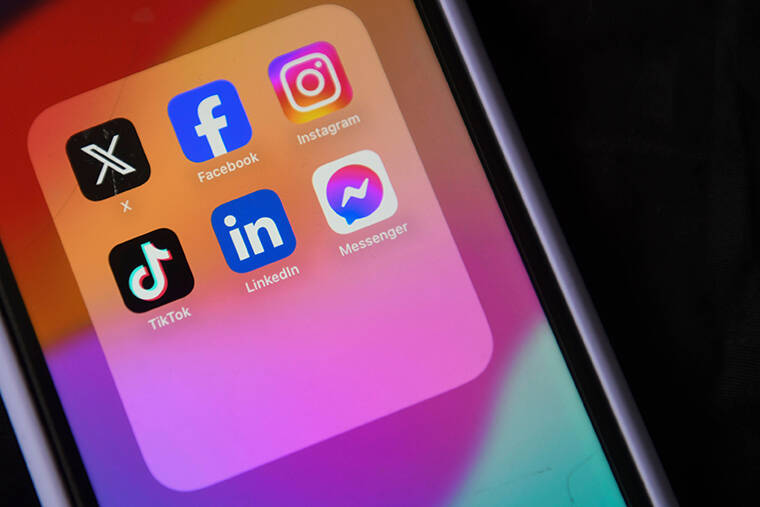Education
Balancing Screen Time and Real-Life Connections for Teens

The increasing reliance on smartphones and digital devices is raising concerns among mental health experts and educators. Research indicates that individuals check their phones an average of 96 times a day, translating to roughly once every ten minutes. For teenagers, the situation is even more pronounced. According to Common Sense Media, adolescents spend over seven hours daily on their devices. This extensive screen time not only consumes valuable hours but also contributes to rising levels of anxiety, stress, and feelings of isolation.
The challenge lies not in the devices themselves but in the balance of their use. While smartphones are crucial for learning and communication, they can also become detrimental when they shift from being useful tools to overwhelming distractions. For instance, the alarming statistic that 1.63 million middle and high school students currently use e-cigarettes illustrates a visible public health crisis. However, digital addiction remains largely unaddressed, despite its potential for equally harmful long-term effects on mental well-being.
Cognitive functions, which include the brain’s ability to process information and regulate emotions, are significantly influenced by screen time. Research from Harvard Medical School emphasizes that the developing brain forms and prunes neural connections based on usage patterns. Engaging in offline activities can bolster vital skills such as problem-solving and creativity, while excessive screen use may foster a passive consumption model that diminishes emotional balance and cognitive growth.
Social media, while offering connectivity, can also exacerbate feelings of anxiety and depression, particularly among teenagers. A report from Psychology Today indicates that 80 percent of girls have utilized filters or apps to modify their appearance by the age of 13. This comparison culture extends beyond physical appearance, affecting academic performance, social status, and personal success, leading to unrealistic expectations and feelings of inadequacy.
The American Journal of Psychiatry highlights that technology addiction can mirror substance use disorders, manifesting through obsessive thoughts, withdrawal symptoms, and escalating usage. Relying on technology as a primary coping mechanism may hinder an individual’s ability to manage responsibilities and function without constant digital stimulation.
Parental engagement is vital in monitoring children’s device usage, tailored to each child’s maturity level. Some children may navigate screen time responsibly, while others might require stricter supervision. Parents should observe their child’s engagement with technology and adjust rules accordingly, as overly restrictive measures can foster resentment, while a lack of guidance may lead to poor habits or unsafe online behavior.
Technology undeniably plays a critical role in communication and information retrieval. Yet, it often extends beyond these functions, encompassing extensive social media scrolling, gaming, and video consumption. The core issue often boils down to a lack of boundaries. Instead of utilizing technology as a productive tool, many find themselves consumed by it, leading to distractions from responsibilities and relationships.
Students at Waipahu High School frequently witness this phenomenon: peers sitting together yet glued to their screens, conversations interrupted by notifications, and individuals opting to scroll rather than engage with one another. These behaviors are not confined to youth; they are prevalent across various age groups.
By prioritizing a balance between digital and face-to-face interactions, individuals can foster stronger connections and enhance their mental well-being. The pressing question remains: do we control our technology, or does it control us? As society navigates this digital landscape, finding a healthy equilibrium is essential for personal growth and meaningful relationships.
The insights shared by students Julianne Ulibas, Erin Kummusaka, and Angelika Mae Garcia underscore the importance of this conversation. Their reflections on technology’s impact appear in the monthly column “Raise Your Hand,” organized by the Center for Tomorrow’s Leaders, which highlights the perspectives of Hawaii’s youth.
-

 Technology5 months ago
Technology5 months agoDiscover the Top 10 Calorie Counting Apps of 2025
-

 Technology2 weeks ago
Technology2 weeks agoOpenAI to Implement Age Verification for ChatGPT by December 2025
-

 Health3 months ago
Health3 months agoBella Hadid Shares Health Update After Treatment for Lyme Disease
-

 Health3 months ago
Health3 months agoErin Bates Shares Recovery Update Following Sepsis Complications
-

 Health3 months ago
Health3 months agoAnalysts Project Stronger Growth for Apple’s iPhone 17 Lineup
-

 Technology5 months ago
Technology5 months agoDiscover How to Reverse Image Search Using ChatGPT Effortlessly
-

 Technology3 months ago
Technology3 months agoElectric Moto Influencer Surronster Arrested in Tijuana
-

 Technology2 months ago
Technology2 months agoDiscover 2025’s Top GPUs for Exceptional 4K Gaming Performance
-

 Technology5 months ago
Technology5 months agoMeta Initiates $60B AI Data Center Expansion, Starting in Ohio
-

 Technology5 months ago
Technology5 months agoRecovering a Suspended TikTok Account: A Step-by-Step Guide
-

 Health5 months ago
Health5 months agoTested: Rab Firewall Mountain Jacket Survives Harsh Conditions
-

 Lifestyle5 months ago
Lifestyle5 months agoBelton Family Reunites After Daughter Survives Hill Country Floods




















